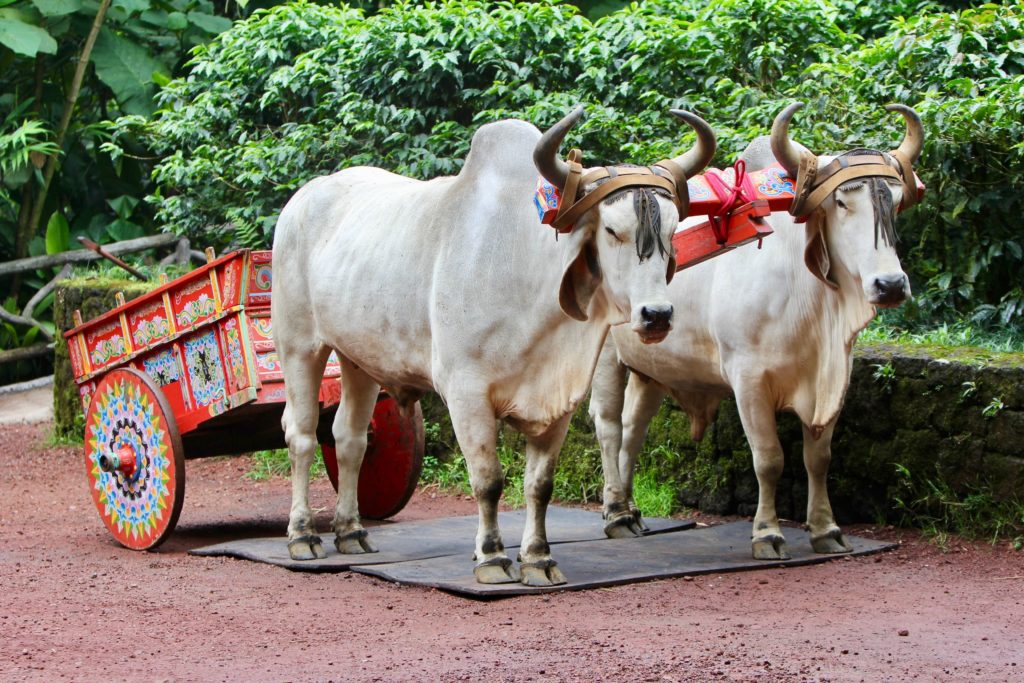Colorful carts!

Let’s explore the typical carts, or ox carts. For this, we take you to Sarchi, near Alajuela, a small town of about 8,000 inhabitants that is considered the cradle of craftsmanship in Costa Rica!
There are more than 200 craft workshops where the majority of wooden furniture and leather goods are produced, mainly including ox carts. These carts are hand-painted with bright, cheerful, and very typical colors, decorated with geometric and kaleidoscopic floral motifs.
Ox carts were used in Costa Rica since the mid-19th century to transport coffee beans from the mountainous regions of the Central Valley to the port of Puntarenas. The tradition of decorating the carts dates back to the early 20th century. Originally, each region had its own decoration, which allowed for easy identification of the “boyero” (cart driver) based on the painted patterns on the wheels. Even at that time, annual competitions were organized to reward the most creative artists. This tradition continues to this day. The most famous event is the “Dia del Boyero” parade, held every year on the second Sunday of March in the village of San Antonio d’Escazu, west of San José.
Although ox carts became obsolete with the arrival of tractors in the 1950s-1960s, this colorful and typically “tico” craft has persisted over the years. There are now carts of all sizes, used for decorating parks and gardens, and even miniature versions for tourists.
The “carreta” became the national symbol of Costa Rica in 1988, commemorating Costa Rican traditions, local craftsmanship, and the importance of agriculture in the history and foundation of the country. Since 2005, it has been classified as an intangible masterpiece by UNESCO.
If you’re visiting Sarchi, don’t hesitate to visit the “Fabrica de Carretas Eloy Alfaro” and the “Fabrica de Carretas Joaquin Chaverri” – a cultural visit and a true journey back in time to days of old!

